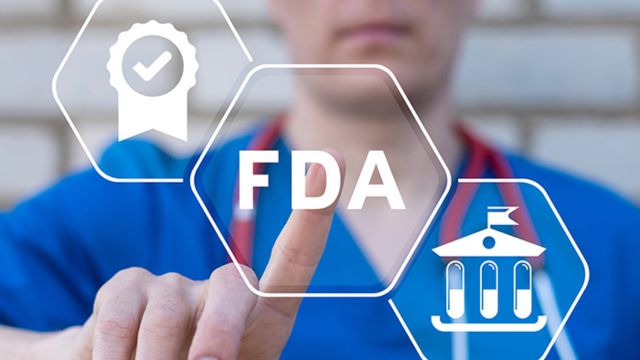Making medical devices is a highly regulated industry. Strict criteria must be followed by manufacturers to guarantee quality, efficacy, and safety of their goods. The FDA (Food and Drug Administration) and ISO (International Organisation for Standardisation) guidelines are the two main regulatory systems available to American medical device makers. Both sets of laws are meant to guarantee that public use medical devices are dependable and safe. This paper will go over in great depth how producers might negotiate these legal requirements and the need of compliance.
1. Understanding FDA Regulations for Medical Devices
Medical device approval, manufacture, and sales under the United States are supervised by the FDA, the regulating authority. Their job is to guarantee that tools satisfy particular criteria necessary for public health protection. Medical devices are categorised by the FDA into three groups according to their patient risk:
-
Class I: Low-risk devices (e.g., bandages, dental floss)
-
Class II: Moderate-risk devices (e.g., infusion pumps, pregnancy tests)
-
Class III: High-risk devices (e.g., pacemakers, heart valves)
Manufacturers must follow the FDA’s Quality System Regulation (QSR), which outlines the necessary processes to design, produce, and distribute medical devices. Compliance with the QSR ensures that manufacturers implement robust quality control measures, including:
-
Design Controls: Ensuring that the device meets performance specifications from the initial design phase through production.
-
Production and Process Controls: Ongoing testing and verification to ensure the device meets required standards.
-
Labeling: Proper labeling of the device to inform users of its intended purpose, usage instructions, and safety warnings.
FDA approval or clearance is mandatory before a medical device can be marketed. Devices in Class I and some Class II categories may be eligible for 510(k) clearance, which requires the manufacturer to demonstrate that the device is substantially equivalent to a legally marketed device. For Class III devices, manufacturers must go through the Premarket Approval (PMA) process, which involves a more thorough review of clinical data and testing.
2. Navigating ISO Standards for Medical Devices
ISO standards play an essential role in global medical device manufacturing. One of the key standards for medical devices is ISO 13485, which specifies the requirements for a quality management system (QMS). Adherence to ISO 13485 is crucial for ensuring consistent product quality and meeting both regulatory and customer expectations.
The ISO 13485 standard focuses on several core areas:
-
Risk Management: ISO 13485 emphasizes the identification, evaluation, and management of risks throughout the device’s lifecycle. This includes evaluating potential risks during the design phase and implementing strategies to mitigate them.
-
Documentation: Manufacturers must maintain detailed records of their processes, including design, testing, and production data. This ensures traceability and accountability in case of recalls or investigations.
-
Supplier Management: Ensuring that suppliers meet stringent quality requirements is critical. ISO 13485 requires manufacturers to assess their suppliers and ensure they comply with the same quality standards.
ISO certification is recognized globally, making it essential for manufacturers that wish to sell their products internationally. Adherence to these standards can not only improve product quality but also streamline the regulatory approval process in countries outside the United States.
3. Key Differences Between FDA and ISO Requirements
While both the FDA and ISO standards aim to ensure product safety and efficacy, there are some key differences between the two:
-
Scope: The FDA’s regulations are specific to the U.S., whereas ISO standards are internationally recognized. ISO 13485 is a global standard that applies to manufacturers worldwide, while FDA regulations are U.S.-centric.
-
Focus: The FDA focuses more on regulatory approval and post-market surveillance, while ISO 13485 focuses on creating a comprehensive quality management system for the manufacturer, from design through production.
-
Documentation: Both the FDA and ISO require detailed documentation, but the FDA places more emphasis on clinical trial data and device efficacy. In contrast, ISO is more focused on the overall quality management system.
4. Challenges in Compliance

Navigating FDA and ISO compliance can be challenging, especially for smaller manufacturers or those new to the medical device industry. Some of the common challenges include:
-
Complex Regulatory Environment: With ever-evolving regulations, staying compliant with both FDA and ISO standards requires constant monitoring and updates.
-
Time-Consuming Approval Process: The approval process for medical devices, especially for higher-risk devices, can be lengthy and resource-intensive.
-
Global Considerations: For manufacturers that wish to enter international markets, understanding the regulatory requirements of different countries and regions is crucial.
5. Ensuring Ongoing Compliance
Compliance isn’t a one-time effort. To maintain adherence to both FDA and ISO standards, manufacturers must establish ongoing processes for quality assurance. This includes regular internal audits, risk assessments, and post-market surveillance to identify potential issues early on.
-
Internal Audits: Regular audits ensure that processes are being followed, quality standards are maintained, and any non-conformance is quickly addressed.
-
Employee Training: Continuous training for employees, especially in regulatory requirements, is essential to ensure everyone is up-to-date with the latest standards and procedures.
-
Post-Market Surveillance: Manufacturers should monitor devices in the market to ensure they perform as expected and comply with regulatory standards.
Conclusion
Regulatory compliance is a vital part of medical device manufacture. Navigating FDA and ISO requirements guarantees that producers deliver safe, effective, and high-quality products for patients and healthcare professionals. Although the process can be tough, it is crucial for maintaining trust in the medical device sector and preventing costly recalls or legal issues.
By conforming to both FDA and ISO rules, medical device makers can streamline their operations, gain access to worldwide markets, and most importantly, contribute to patient safety.
At J & J Supplies, we understand the complexities of regulatory compliance in the medical device industry. Our comprehensive range of medical and clinical supplies adheres to the highest safety standards, ensuring that your devices meet FDA and ISO requirements. Need assistance in sourcing compliant products? Visit JandJSupplies.com today and find the right supplies for your business.








